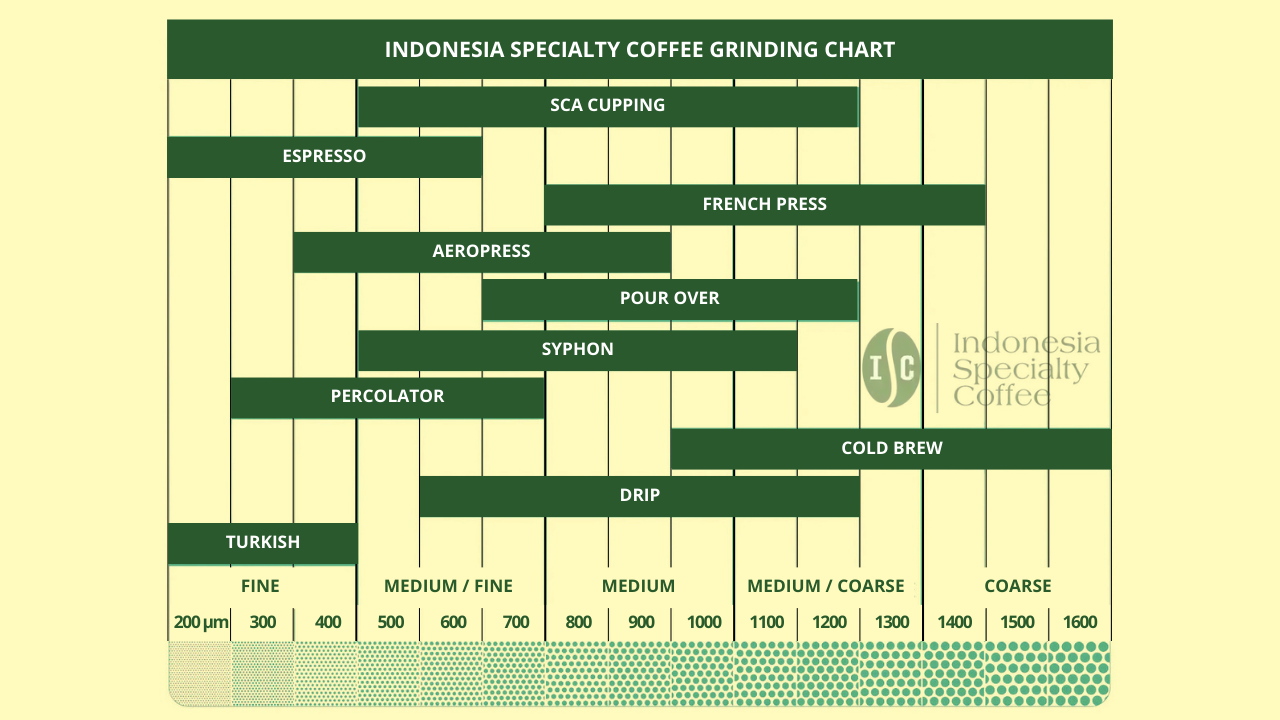Acids in Coffee, that beloved beverage enjoyed by millions worldwide, possesses a complex flavor profile that goes beyond just bitterness. Among the key contributors to this delightful interplay of taste are acids. These tangy components play a crucial role in shaping the sensory experience of coffee, adding brightness, sharpness, and a certain level of complexity.
Table of Contents
A Symphony of Acidity: Organic Acids Take Center Stage
Coffee boasts a rich tapestry of organic acids, each contributing its unique note to the overall flavor. Here’s a closer look at some of the key players:
-
Chlorogenic Acids (CGAs): These are the most abundant acids in green coffee beans, accounting for roughly 11% of their weight. CGAs are further broken down into various subtypes, with 5-caffeoylquinic acid (5-CQA) being the most prominent. During roasting, CGAs degrade, impacting the overall acidity and bitterness of the final brew.
-
Citric Acid: This ubiquitous acid, also found in citrus fruits, lends a bright, citrusy character to coffee. It contributes to a refreshing and lively taste profile.
-
Malic Acid: This acid, present in apples and other fruits, imparts a tart, apple-like quality to coffee. It can add a pleasant sharpness and complexity, balancing out the sweetness and bitterness.
-
Acetic Acid: While present in smaller quantities, acetic acid plays a role in shaping coffee’s aroma. When found in higher concentrations, it can contribute a vinegar-like note, which is generally undesirable.
These acids, along with others like succinic and lactic acids, work together to create the unique acidity profile of each coffee. The interplay between these tangy elements and other flavor components like sweetness, bitterness, and body ultimately determines the sensory experience of your cup.
The Impact of Acids: Balancing the Flavor Equation
Acidity plays a critical role in the following aspects of coffee’s flavor profile:
-
Brightness: Acids are responsible for the lively, citrusy character often described as “brightness” in coffee. They contribute to a refreshing and invigorating taste.
-
Sharpness: Certain acids, like malic acid, can add a pleasant sharpness or tang to coffee, enhancing its complexity and preventing it from tasting flat.
-
Balance: Acidity helps balance out the sweetness and bitterness present in coffee. It can cut through the richness and prevent the coffee from tasting dull or overly bitter.
-
Complexity: The interplay of various acids adds depth and dimension to the flavor profile. A well-balanced coffee with a good acidity level is often described as having a complex and interesting taste.
While a certain level of acidity is desired for a well-rounded cup, excessively high acidity can lead to a sour or harsh taste. Conversely, very low acidity can make coffee taste flat and dull.
Factors Influencing Acidity: From Bean to Brew
Several factors can influence the level and character of acidity in your coffee:
-
Bean Origin: The type of coffee bean plays a significant role. Arabica beans are generally known for their higher acidity, with a brighter and more citrusy profile compared to Robusta beans, which have a lower acidity and can sometimes taste harsh. Additionally, specific coffee regions are known for their characteristic acidity profiles. For example, coffees from Ethiopia and Kenya are renowned for their bright, floral acidity, while Sumatran beans tend to have a more subdued acidity with earthy or chocolaty notes.
-
Roast Level: Roasting significantly impacts coffee’s acidity. Lighter roasts retain more of the natural acids present in green coffee beans, resulting in a brighter and more acidic cup. Conversely, darker roasts break down some of the acids, leading to a smoother, less acidic taste profile.
-
Brew Method: The brewing method also plays a role. Techniques like pour-over and Chemex tend to extract more acidity, resulting in a brighter cup. On the other hand, methods like cold brew or immersion brewing extract less acidity, leading to a smoother and less acidic profile.
-
Grind Size: Grind size affects how quickly water extracts coffee solubles, including acids. A finer grind results in a faster extraction and potentially higher acidity. Conversely, a coarser grind leads to a slower extraction and a less acidic cup.
Acids in Coffee: The Tangy Underpinnings of a Flavorful Brew
Coffee, that beloved beverage enjoyed by millions worldwide, possesses a complex flavor profile that goes beyond just bitterness. Among the key contributors to this delightful interplay of taste are acids. These tangy components play a crucial role in shaping the sensory experience of coffee, adding brightness, sharpness, and a certain level of complexity.
This article delves into the world of acids in coffee, exploring the different types, their impact on taste, and how factors like bean origin and brewing methods influence the final cup.
A Symphony of Acidity: Organic Acids Take Center Stage
Coffee boasts a rich tapestry of organic acids, each contributing its unique note to the overall flavor. Here’s a closer look at some of the key players:
-
Chlorogenic Acids (CGAs): These are the most abundant acids in green coffee beans, accounting for roughly 11% of their weight. CGAs are further broken down into various subtypes, with 5-caffeoylquinic acid (5-CQA) being the most prominent. During roasting, CGAs degrade, impacting the overall acidity and bitterness of the final brew.
-
Citric Acid: This ubiquitous acid, also found in citrus fruits, lends a bright, citrusy character to coffee. It contributes to a refreshing and lively taste profile.
-
Malic Acid: This acid, present in apples and other fruits, imparts a tart, apple-like quality to coffee. It can add a pleasant sharpness and complexity, balancing out the sweetness and bitterness.
-
Acetic Acid: While present in smaller quantities, acetic acid plays a role in shaping coffee’s aroma. When found in higher concentrations, it can contribute a vinegar-like note, which is generally undesirable.
These acids, along with others like succinic and lactic acids, work together to create the unique acidity profile of each coffee. The interplay between these tangy elements and other flavor components like sweetness, bitterness, and body ultimately determines the sensory experience of your cup.
The Impact of Acids in Coffee: Balancing the Flavor Equation
Acidity plays a critical role in the following aspects of coffee’s flavor profile:
-
Brightness: Acids are responsible for the lively, citrusy character often described as “brightness” in coffee. They contribute to a refreshing and invigorating taste.
-
Sharpness: Certain acids, like malic acid, can add a pleasant sharpness or tang to coffee, enhancing its complexity and preventing it from tasting flat.
-
Balance: Acidity helps balance out the sweetness and bitterness present in coffee. It can cut through the richness and prevent the coffee from tasting dull or overly bitter.
-
Complexity: The interplay of various acids adds depth and dimension to the flavor profile. A well-balanced coffee with a good acidity level is often described as having a complex and interesting taste.
While a certain level of acidity is desired for a well-rounded cup, excessively high acidity can lead to a sour or harsh taste. Conversely, very low acidity can make coffee taste flat and dull.
Factors Influencing Acidity: From Bean to Brew
Several factors can influence the level and character of acidity in your coffee:
-
Bean Origin: The type of coffee bean plays a significant role. Arabica beans are generally known for their higher acidity, with a brighter and more citrusy profile compared to Robusta beans, which have a lower acidity and can sometimes taste harsh. Additionally, specific coffee regions are known for their characteristic acidity profiles. For example, coffees from Ethiopia and Kenya are renowned for their bright, floral acidity, while Sumatran beans tend to have a more subdued acidity with earthy or chocolaty notes.
-
Roast Level: Roasting significantly impacts coffee’s acidity. Lighter roasts retain more of the natural acids present in green coffee beans, resulting in a brighter and more acidic cup. Conversely, darker roasts break down some of the acids, leading to a smoother, less acidic taste profile.
-
Brew Method: The brewing method also plays a role. Techniques like pour-over and Chemex tend to extract more acidity, resulting in a brighter cup. On the other hand, methods like cold brew or immersion brewing extract less acidity, leading to a smoother and less acidic profile.
-
Grind Size: Grind size affects how quickly water extracts coffee solubles, including acids. A finer grind results in a faster extraction and potentially higher acidity. Conversely, a coarser grind leads to a slower extraction and a less acidic cup.
Brewing for Balanced Acidity: Tips for the Perfect Cup
Understanding how these factors influence acidity allows you to tailor your brewing process to achieve your desired taste profile. Here are some tips:
- Experiment with Bean Origin: Explore coffees from different regions known for their acidic profiles, like Ethiopia or Kenya, if you enjoy bright, citrusy coffee.
-
Experiment with Bean Origin (continued): Conversely, if you prefer a smoother cup with lower acidity, try coffees from regions like Sumatra or Sulawesi, known for their earthier and chocolaty notes.
-
Adjust Your Roast Level: For a brighter, more acidic cup, opt for lighter roasts. If you prefer a smoother and less acidic profile, choose darker roasts.
-
Fine-tune Your Brewing Method: Methods like pour-over and Chemex are ideal for extracting acidity. If you want a less acidic brew, consider immersion methods like French Press or cold brew. Experiment and find a brewing technique that suits your preference.
-
Play with Grind Size: A coarser grind yields a slower extraction and less acidity. Conversely, a finer grind can lead to a faster extraction and potentially higher acidity. Adjust your grind size based on your brewing method and desired acidity level.
-
Water Quality Matters: Water hardness can impact acidity. Soft water can sometimes accentuate the perception of acidity in coffee. Consider using filtered water or experimenting with adding a small amount of mineral content to your brewing water for a smoother cup.
-
Freshness is Key: Freshly roasted coffee beans generally have a brighter acidity. As coffee ages, its acidity tends to mellow out. Opt for freshly roasted beans for a vibrant and flavorful cup.
By understanding the role of acids in coffee and experimenting with the factors mentioned above, you can unlock a world of flavor possibilities and brew a cup that perfectly suits your taste. Remember, coffee brewing is an art, and finding your ideal balance of acidity is part of the journey.
Beyond Brightness: Exploring the Positive Impact of Acids in Coffee
Acidity is often associated with a bright, citrusy flavor profile. However, it also plays a crucial role in other aspects of the coffee experience:
-
Aroma: Acids contribute to the volatile compounds that create coffee’s aroma. They can enhance the overall fragrance and complexity of the smell.
-
Mouthfeel: The right level of acidity can contribute to a pleasant mouthfeel, making the coffee taste lively and invigorating on the palate.
-
Health Benefits: Some studies suggest that chlorogenic acids, the most abundant type in coffee, may offer health benefits, such as aiding in blood sugar control. However, further research is needed to solidify these claims.
Overall, appreciating the positive impact of acidity allows for a more nuanced understanding of coffee. It’s not just about brightness; it’s about unlocking a range of flavor and sensory experiences.








